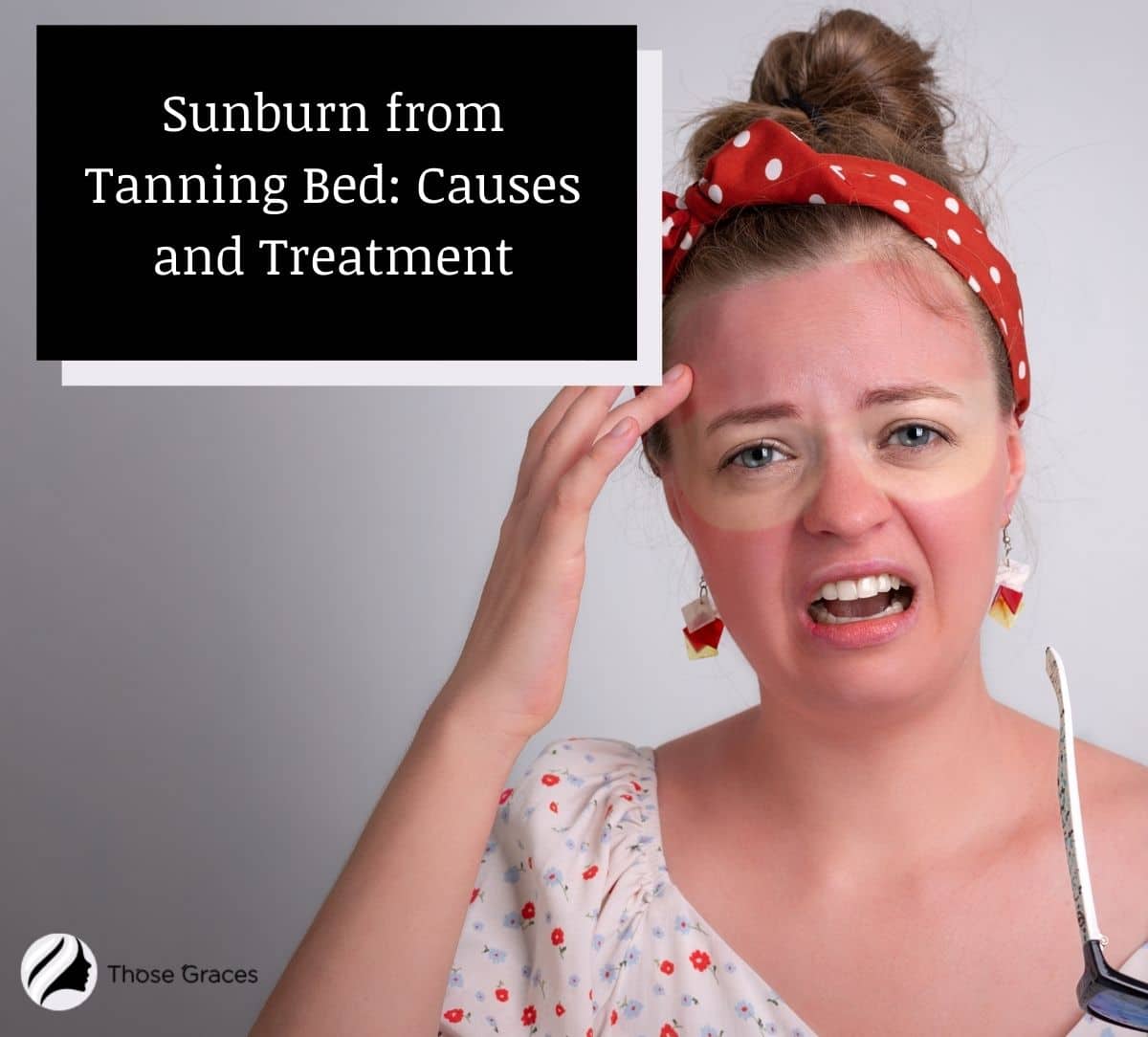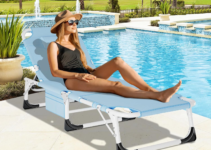If you’re like me, you probably love the look of a tan despite the fear of picking a sunburn from a tanning bed.
There’s just something about having a bit of color in your skin that makes you feel alive and beautiful.
So, when I was younger, I would go to tanning salons pretty much every week to get my fix.
And, in these tanning days, I did hear stories from friends about how bad their sunburns were, which I didn’t buy at first, but later found out to be true.
I’m going to share some of these tanning industry truths with you below.
Let’s dive right in!
READ MORE: How to Prevent Rash From Tanning Bed
Table of Contents
What Are The Causes of Tanning Bed Burns?
One of my friends’ significant questions about tanning booth burns is, “What causes them?”
But before I answer that based on what I’ve learned and researched over the years, here’s a quick disclaimer:
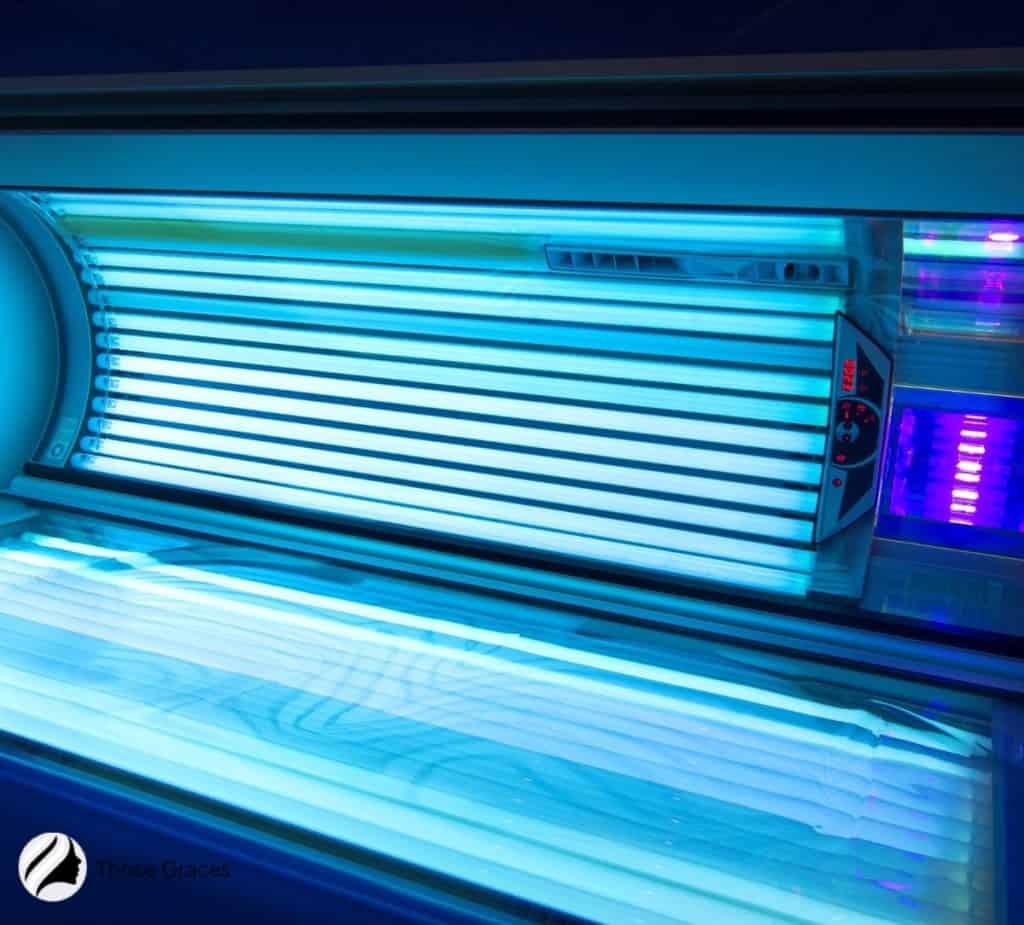
I’m not advocating the usage of tanning booths/beds for teenagers and younger adults as they’re more at risk of skin cancer (1).
Also, nothing in this post should be construed as medical advice. If you’re dealing with tanning bed burn symptoms, see a doctor.
With that aired out, let’s get back to the question at hand:
What causes tanning booth burns?
A few things can contribute to this, but the main cause is usually overexposure to UV rays.
According to the Mayo Clinic, tanning beds emit ultraviolet rays (2) (UVA) that permanently age users’ skin and increase skin cancer risk.
Additionally, if you’ve been in a tanning booth like me, you’ll know the bed produces a significant amount of heat that can harm your skin.
And if you closely follow the news, you’ll remember that in 2014, Lake Worth lawmakers attempted to impose a ban on the beds, as shown in the video below:
This was amid claims that these beds caused serious skin health problems, especially among teenagers.
So, if you’re looking to avoid sunburn (and skin cancer), it’s best to stay out of the tanning booth.
While plenty of people will tell you that they’ve never gotten a sunburn from a tanning bed, the reality is that it can happen to anyone.
What Do Tanning Bed Burns Look Like?
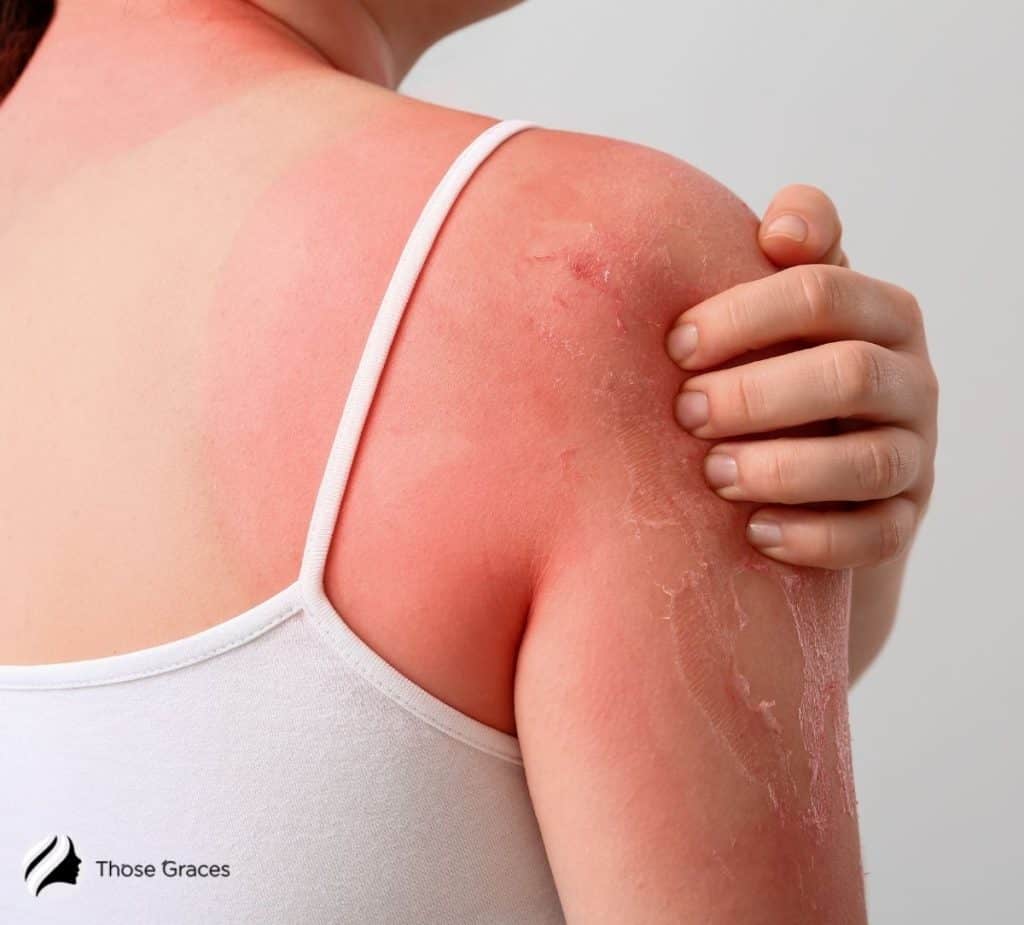
Tanning bed burns usually look like any other type of burn. You’ll see red, irritated skin that may be warm to the touch.
You may also see blisters with water ready to pop in more severe cases.
These water-filled blisters are called bullae and are very painful, especially when they burst open.
Like other burns, burns from tanning beds result from the heat you expose your skin to once you get inside the tanning booth.
As far as my experience with tanning is concerned, people who spent more than the recommended time inside the booths ended up with worse burns.
Those with lighter skin than normal closely follow them.
So the picture of what tanning bed burns look like differs depending on whether users have healthy skin with enough layers of skin protection.
If you’re still unable to picture what a tanning booth burn looks like, this video below should help paint a more vivid picture:
ALSO CHECK: Self Tanner Allergy Symptoms
Tanning Bed vs. Sun: Which One’s Good for You
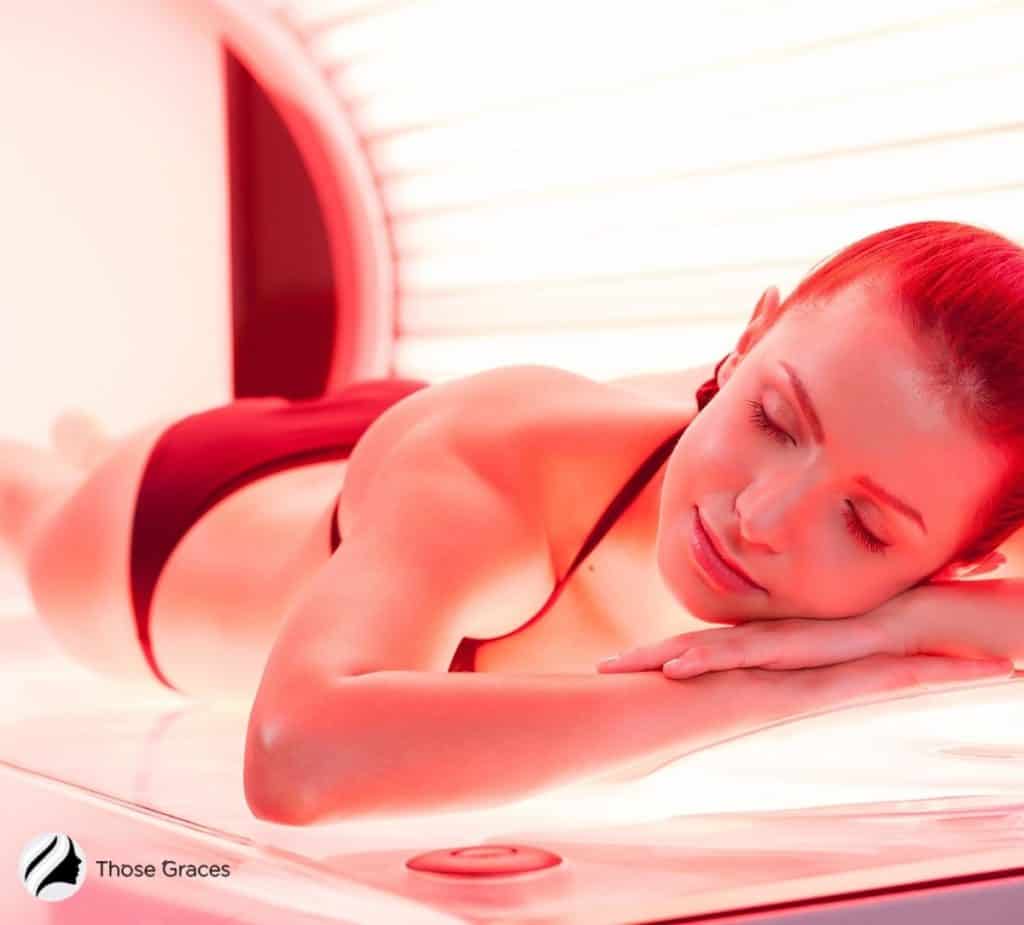
A tanning bed is associated with several types of skin cancer, including squamous and basal cell carcinoma and other skin conditions like premature skin aging. [3]
The case is no different with sunlight, as UV rays from the sun are also linked to skin conditions like melanoma, the deadliest form of skin cancer.
While both options seem to have equally harmful outcomes, the sun is a better option for those who must perform tanning.
This is because it comes with some health benefits like a daily vitamin D supply when you take in the right amount of sunlight at the right time (between 8 -10 am).
A tanning booth emits about 3 times more UVA light than the sun but a little less intense UVB radiation than what the sun gives.
With 3-times stronger UVA radiation, the tanning booth remains a riskier option for anyone looking to bronze their skin.
When Should You See a Doctor?
If you have a skin type that is susceptible to burning, you should see a doctor if your skin is anything more than slightly pink after using a tanning bed.
You should also seek medical treatment if:
- You develop any form of skin discomfort or itchiness after tanning sessions
- You notice any changes in your skin, such as new moles, sores that won’t heal, or changes in existing moles
- You have any other concerns about your skin
It’s essential to see a doctor for examination if you notice any of the above signs or doubts about the tanning bed session.
How to Heal Tanning Bed Burns at Home
Every patient’s dream is to receive treatment care at home next to their loved ones.
The case is no different when treating skin conditions caused by tanning booth mistakes.
How do you heal tanning bed burns at home?
1) First and foremost, minimize your Ultraviolet Radiation exposure!
That means no more tanning beds, no more sunbathing, and no more extended exposure to sunlight.
You might be thinking, “I’m already burnt; what’s a little more sun going to do?”
But trust us, staying out of the sun is crucial to the healing process.
Not only will more sun exposure prolong the burning sensation, but it can also cause blistering and peeling.
So find a shady spot and stay there!
2) Next, focus on hydration.
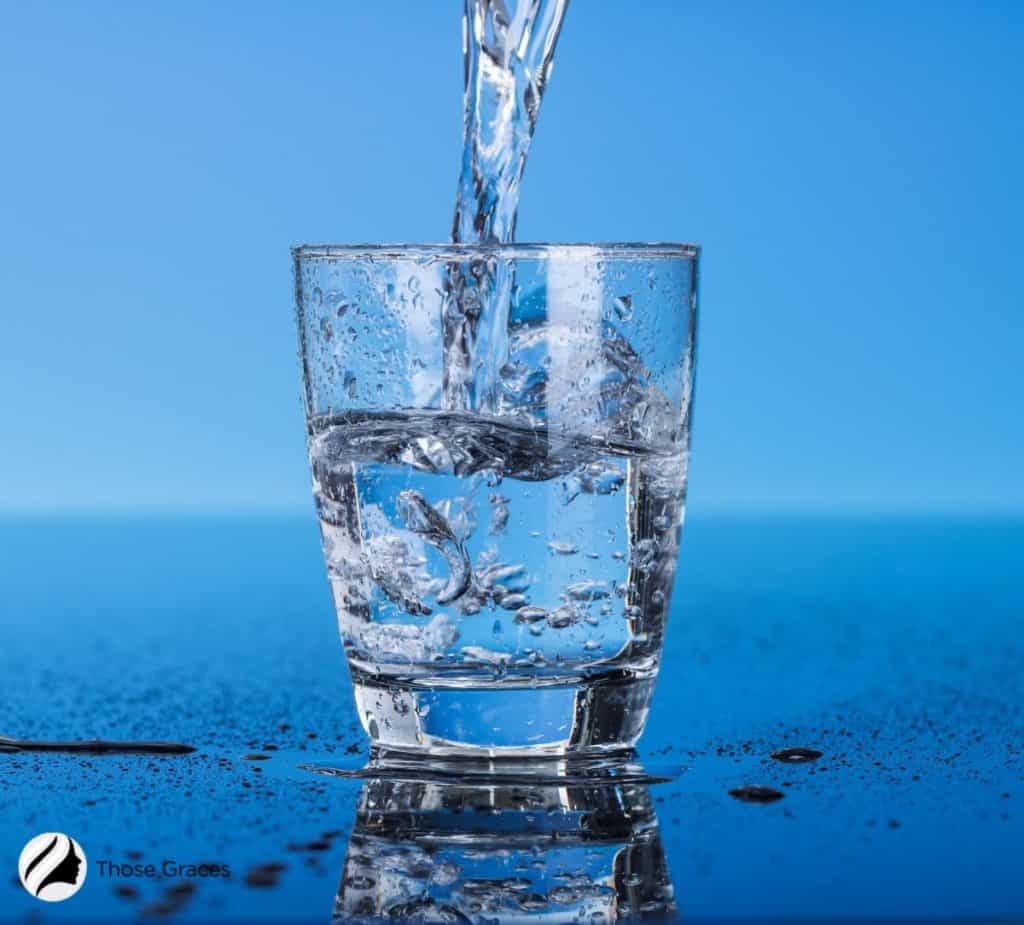
Drink lots of water and apply a cool compress to the affected area several times daily.
This will help to soothe the dry skin and prevent dehydration.
3) Finally, use over-the-counter treatments like Aloe Vera gel or hydrocortisone cream to relieve pain and inflammation.
Follow these tips, and you’ll be on your way to recovery in no time!
How to Prevent Sunburn from Tanning Bed
The best way to prevent sunburn from a tanning bed is not to use one.
But if you must, always wear sunscreen with a sun protection factor (SPF) (4) of 30 or higher, and make sure to reapply it every two hours.
I can equally recommend the following additional prevention methods after an indoor tanning session:
- Wear a wide-brimmed hat over your face to protect it after the session
- Avoid direct contact with natural sunlight on your skin, especially between 10 a.m. and 2 p.m.
- Go indoors or under a shade immediately. Your skin starts turning pink
- Finally, be sure to stay hydrated by drinking plenty of water before and after your tanning sessions
If you follow these tips, you can help prevent sunburn from a tanning bed.
But remember, the best way to protect your skin is to avoid indoor tanning altogether.
For more indoor tanning tips, check our separate guide.
FAQs
What are the common symptoms of sunburn from a tanning bed?
Other symptoms can include blisters, fever, chills, and nausea. If you experience any of these symptoms, it is essential to seek medical attention immediately.
What are the long-term effects of sunburn from a tanning bed?
These effects can include premature aging, skin cancer, and other types of human skin damage.
What are some of the benefits of tanning beds?
These benefits include the production of vitamin D, enhanced mood due to improved appearance, and the prevention of seasonal affective disorder.
However, these benefits are not supported by scientific evidence, and the risks of using a tanning bed, such as the risk of skin cancer, far outweigh any potential benefits.
Do tanning beds clear up acne?
This is temporary, but it can also cause long-term damage to your skin.
Conclusion
Now that you know the truth about sunburn from tanning beds, hopefully, you will make the right decision concerning tanning beds and your skin.
Remember, the sun is not always your friend for your skin cells! Be safe and use sunscreen whenever you are outdoors.
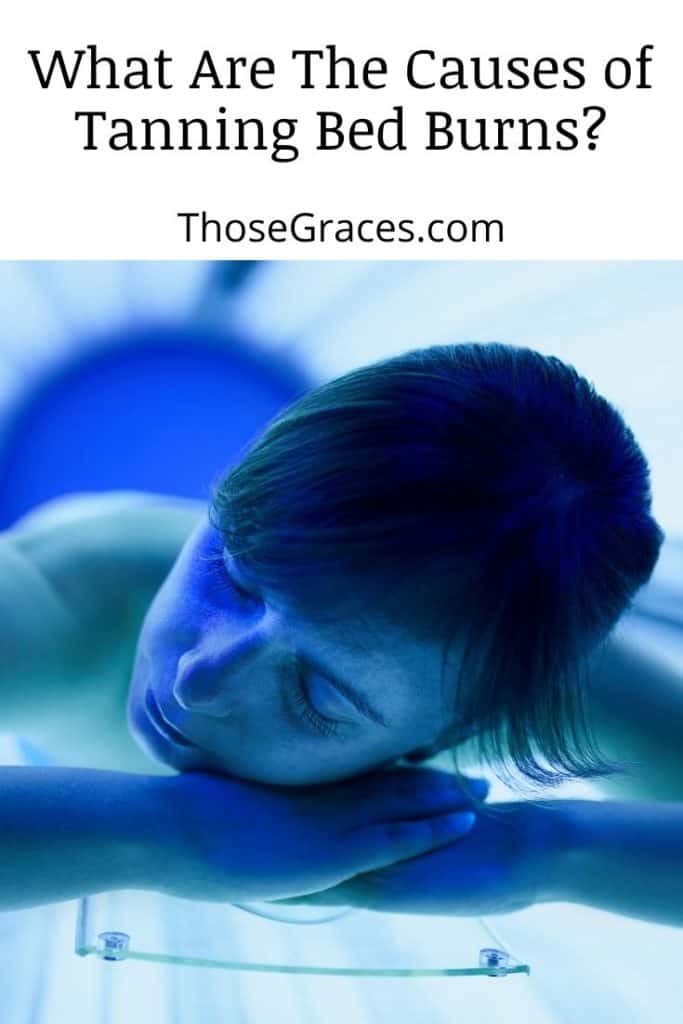
Have you experienced getting sunburn from tanning beds? Let us know below!
References
- 1. Zhang M, Qureshi AA, Geller AC, Frazier L, Hunter DJ, Han J. Use of Tanning Beds and Incidence of Skin Cancer. Journal of Clinical Oncology [Internet]. 2012;30:1588–93. Available from: https://www.ncbi.nlm.nih.gov/pmc/articles/PMC3383111/
- 2. Mayo Clinic Q and A: Tanning beds raise risk for skin cancer [Internet]. Mayo Clinic News Network. 2019 [cited 2022 Apr 22]. Available from: https://newsnetwork.mayoclinic.org/discussion/mayo-clinic-q-and-a-tanning-beds-raise-risk-for-skin-cancer/#:~:text=The%20type%20of%20UV%20radiation
- 3. 10 surprising facts about indoor tanning [Internet]. www.aad.org. Available from: https://www.aad.org/public/diseases/skin-cancer/surprising-facts-about-indoor-tanning#:~:text=Tanning%20beds%20are%20NOT%20safer%20than%20the%20sun.&text=Just%20one%20indoor%20tanning%20session
- 4. Research C for DE and. Sun Protection Factor (SPF). FDA [Internet]. 2018; Available from: https://www.fda.gov/about-fda/center-drug-evaluation-and-research-cder/sun-protection-factor-spf#:~:text=SPF%20is%20a%20measure%20of
